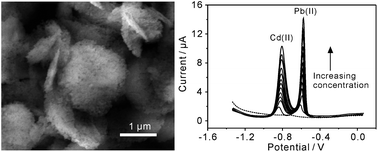Stripping voltammetry study of ultra-trace toxic metal ions on highly selectively adsorptive porous magnesium oxide nanoflowers
Abstract
We have demonstrated highly selective and sensitive detection of Pb(II) and Cd(II) using a highly selective adsorptive porous


 Please wait while we load your content...
Please wait while we load your content...